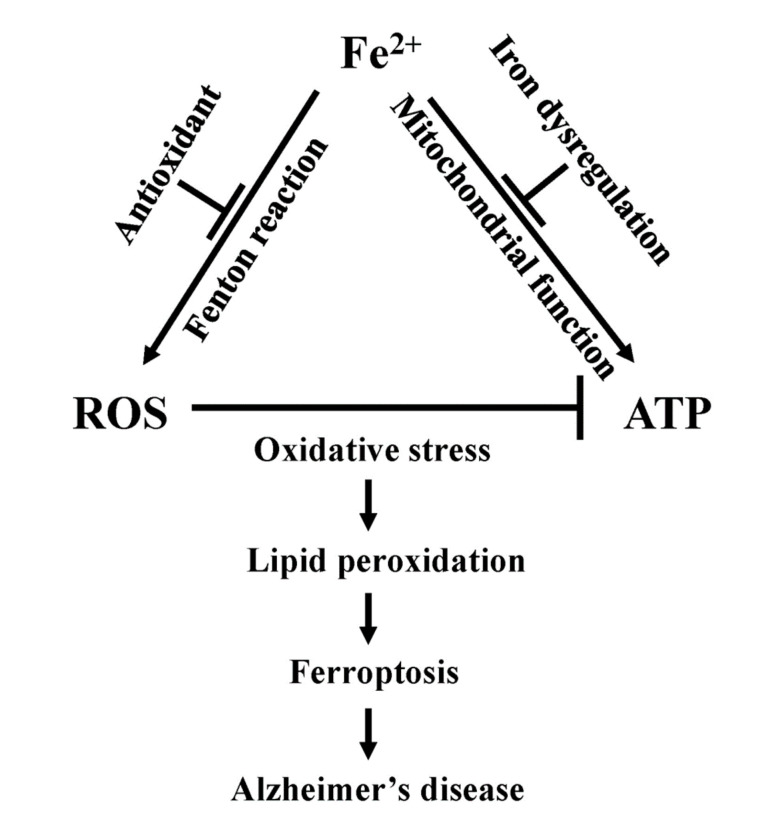Figure 5.
Ferroptosis, mitochondrial dysfunction and Alzheimer’s disease. Unbound Fe2+ plays a role in ATP production via electron transfer and enzymatic reactions [12,14,16,75,76,77]. Fe2+ dysregulation inhibits mitochondrial function resulting in decreased ATP production [37,67,68]. Fe2+ is involved in ROS generation through the Fenton reaction [21,22,32,33] which is blocked by antioxidant [40,41,42,43,44,45,46]. ROS block ATP production via oxidative stress [20,21,22] that damages membrane lipids resulting in lipid peroxidation [70,71,72,73,74]. The accumulation of lipid peroxidation result in cell death known as ferroptosis [23,24,25,26,27,28,29] which can lead to Alzheimer’s disease.

